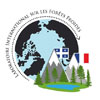Forêts Froides

5è rencontre annuelle du Laboratoire International de Recherche sur les Forêts Froides
Lire plusLa Chaire a pour mission d'assurer le développement et la qualité des activités de recherche, formation et transfert technologique nécessaires à l'élaboration et à l'application de stratégies et de pratiques d'aménagement forestier durable. En collaboration avec ses partenaires régionaux, elle fixe les priorités de recherche et participe à des actions concertées répondant aux grandes problématiques régionales et nationales.
jan 22
Colloques du SCF-CFL
Maxence Martin
10h30
fév 12
Colloques du SCF-CFL
Richard Fournier
10h30
fév 17
Rendez-vous de la connaissance en aménagement forestier durable
MRNF
13h00 à 16h45
fév 19
Colloques du SCF-CFL
Alexis Achim
10h30
mar 05
Colloques du SCF-CFL
Christian Hébert
10h30
Janie Lavoie, Yves Bergeron, Maxence Martin, Miguel Montoro Girona. Spruce budworm outbreaks promote natural regeneration of Eastern white pine 2026. For. Ecol. Manage. 123320
DOI : 10.1016/j.foreco.2025.123320
Maya Disraëli Ratsimandresiarivo, Annie DesRochers, Jérôme Laganière, Vincent Poirier, Xavier Cavard. Regional characteristics drive thinning effects on boreal soil organic carbon stocks 2026. For. Ecol. Manage. 123283
DOI : 10.1016/j.foreco.2025.123283
Vous pouvez voir en rediffusion les présentations qui ont eu lieu dans le cadre des midi-foresterie de l'UQAT.